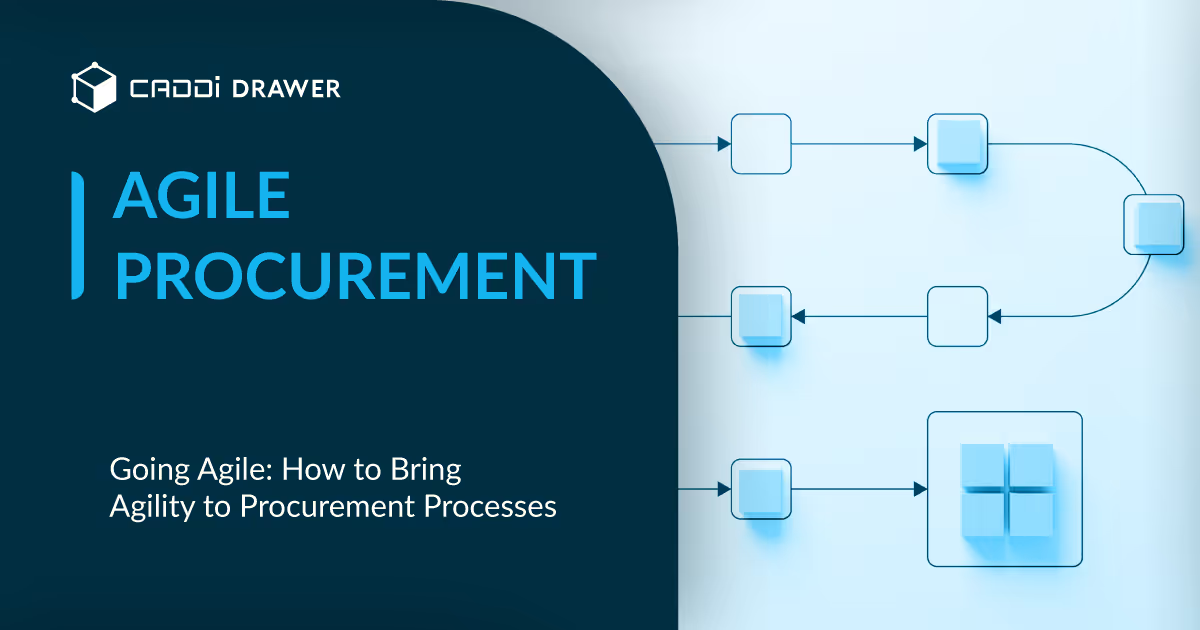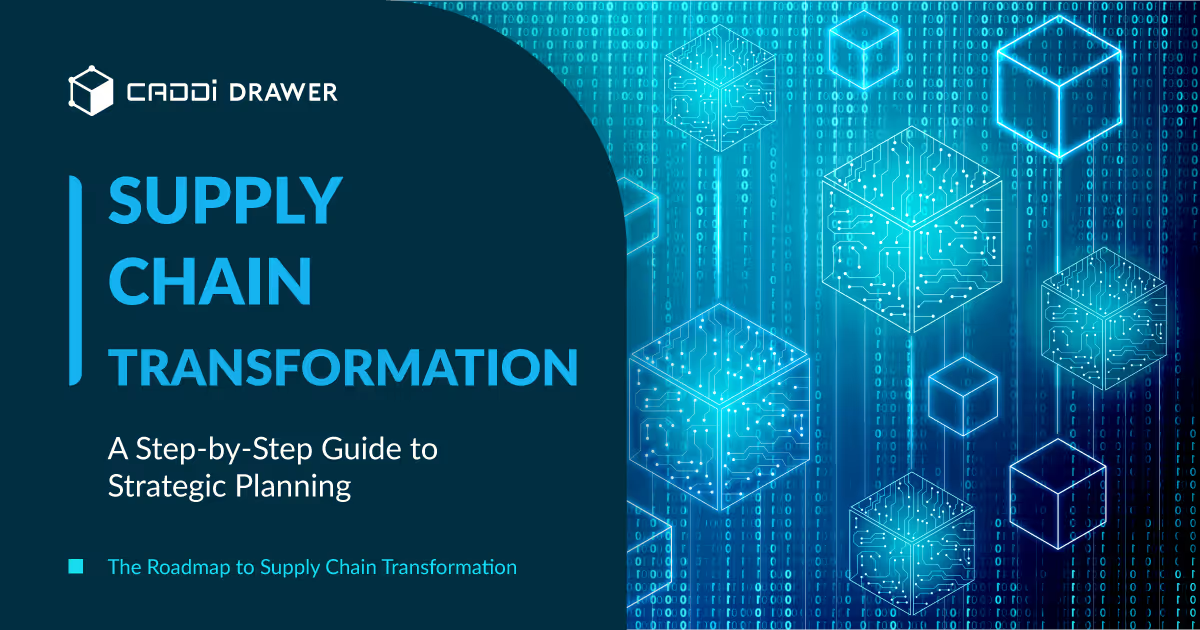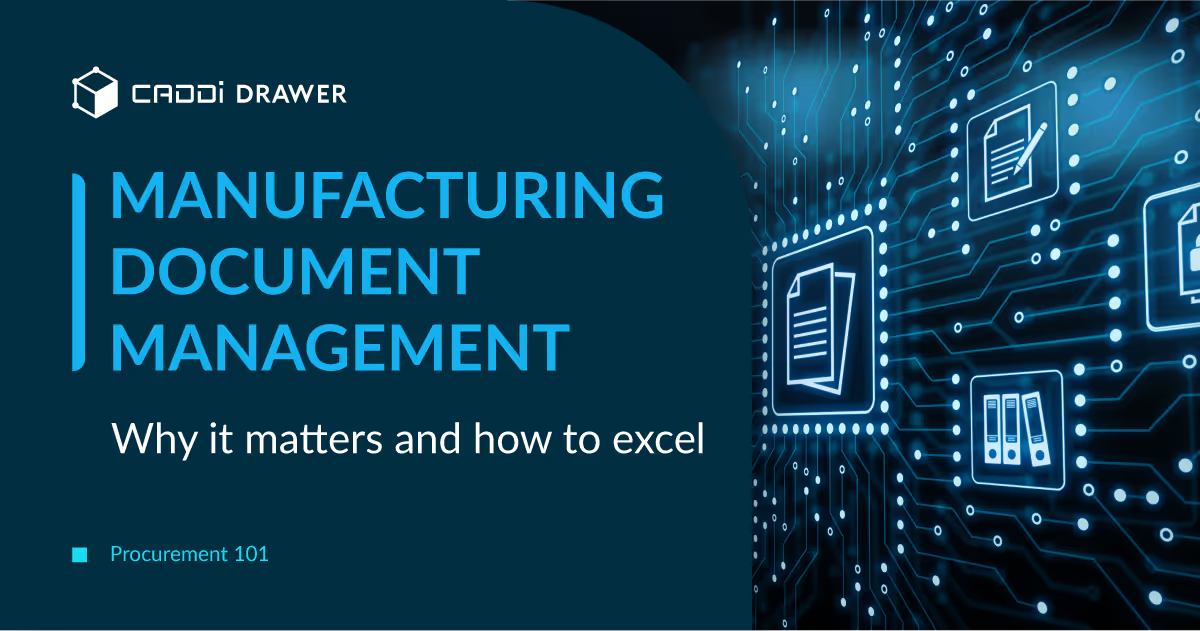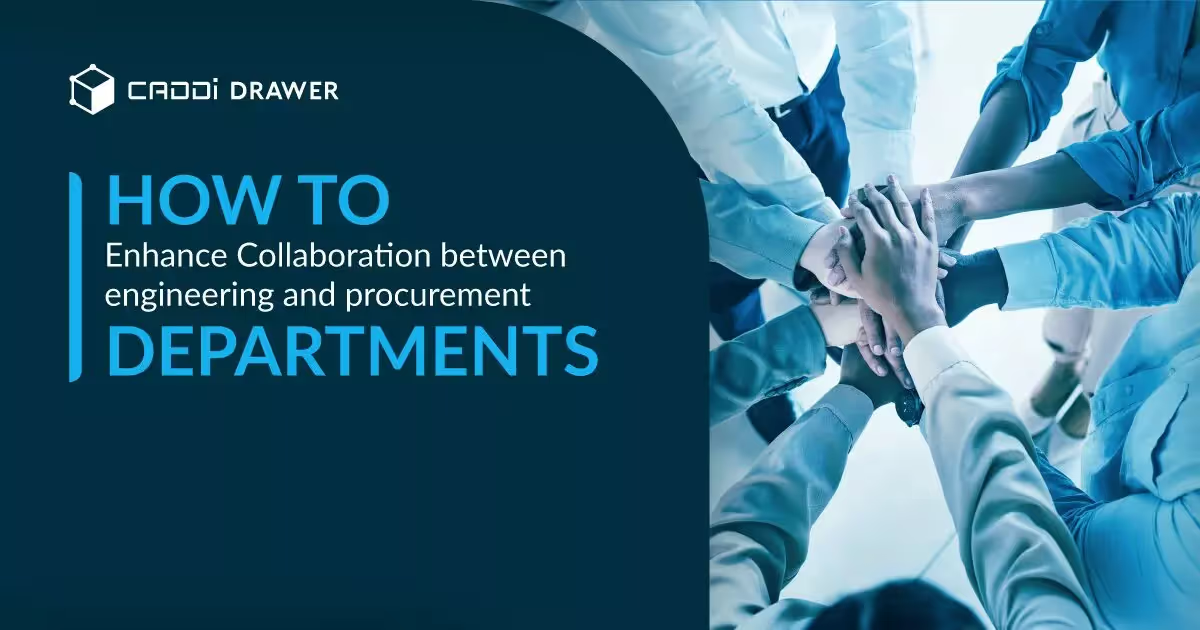Going Agile: How to Bring Agility to Procurement Processes

Table of Contents

What is Agile Procurement?
Agile procurement is an approach to purchasing goods and services that applies agile principles to streamline and improve procurement processes. The goal is to increase efficiency, flexibility, and collaboration between procurement teams and internal stakeholders.
Some key benefits of agile procurement include:
- Faster procurement cycles – Agile focuses on breaking large projects into smaller pieces that can be delivered incrementally. This allows procurement to acquire goods and services in smaller batches on a more frequent basis.
- Increased flexibility – With an agile approach, requirements can be re-prioritized as business needs change. This gives procurement more options to pivot based on shifting priorities.
- Improved collaboration – Agile emphasizes cross-functional collaboration. Procurement works closely with key stakeholders in product teams to understand needs and provide rapid feedback.
- Focus on business value – Each increment of work focuses on maximizing business value. Procurement priorities and solutions are tied directly to business objectives.
- Continuous improvement – Agile procurement utilizes feedback loops, reviews, and retrospectives to continuously refine processes and improve teamwork.
The overarching goal of agile procurement is to create lean, nimble, and responsive purchasing capabilities that enhance stakeholder satisfaction and operational efficiency. It provides a framework for procurement to become a strategic business partner.
Agile Principles Applied to Procurement
Agile procurement applies key principles from agile software development to the procurement process:
- Adaptability to changing requirements: Traditional procurement follows a rigid, sequential process. Agile procurement allows requirements to evolve iteratively based on regular feedback and collaboration. This enables procuring the right solutions as needs change.
- Incremental releases and continuous improvement: Rather than attempting to procure a complete solution upfront, agile procurement delivers solutions in iterations. Each iteration provides incremental value and learnings to improve subsequent iterations.
- Close collaboration between teams: In agile procurement, procurement teams, suppliers, and business units collaborate closely throughout the process. Together, they clarify requirements, evaluate options, and continuously improve solutions. This level of collaboration gets the right solutions procured faster.
Agile Procurement in Manufacturing
The manufacturing sector is increasingly adopting agile practices in procurement to improve flexibility, speed and efficiency. Some specific agile initiatives and strategies being employed include:
Supplier collaboration platforms
Manufacturers are using digital collaboration platforms to enable real-time information sharing and joint problem solving with suppliers. This allows for faster issue resolution and continuous improvement of procured parts and materials.
Rapid prototyping with suppliers
Agile procurement teams in manufacturing are working with suppliers to quickly prototype components using 3D printing and other rapid fabrication methods. This agile approach allows faster iteration and refinement of designs prior to mass production.
Flexible contracting for materials
Manufacturers are moving away from long-term bulk material contracts in favor of agile contracts with more frequent, smaller batch deliveries. This provides flexibility to adjust material types and quantities as end-product requirements change.
Vendor managed inventory
Some manufacturers are shifting to vendor managed inventory models, where suppliers monitor and automatically replenish stock based on real-time consumption data. This agile approach reduces inventory carrying costs and stockouts.
Procuring manufacturing-as-a-service
For low volume or highly customized parts, some manufacturing procurement teams are engaging suppliers that offer manufacturing-as-a-service. These vendors provide on-demand production capacity that can be rapidly scaled up or down as needed, providing agility.
Cross-functional procurement teams
Leading manufacturers are creating cross-functional agile procurement teams that include representatives from engineering, quality, supply chain, and operations. This enables fast collaboration to optimize total cost and lead time for procured parts and materials.
Implementing Agile Procurement
Implementing agile procurement requires several key changes to traditional procurement processes:
- Cross-functional teams: Procurement teams should include representatives from IT, finance, legal, and business units. This cross-functional collaboration enables faster decision making.
- Flexible contracts: Traditional long-term contracts don’t align with agile principles. Agile favors shorter contracts with iterative cycles. This provides flexibility to pivot based on changing needs.
- Agile software/tools: Specialized agile project management tools facilitate collaboration and transparency between procurement and delivery teams. Tools like Jira and Trello enable real-time tracking of iterations.
The combination of cross-functional teams, flexible contracting, and agile software creates an adaptive procurement environment suited for agile delivery. With the right stakeholders involved and tools in place, procurement can keep pace with agile development cycles.
Challenges of Agile Procurement
Adopting an agile approach can be difficult for procurement teams accustomed to traditional processes. Some key challenges include:
- Resistance to change – Moving from a rigid, linear process to an iterative, collaborative one represents a major shift for procurement professionals. Many are hesitant to embrace agile methods. Overcoming the “this is how we’ve always done it” mindset requires strong change management.
- Lack of supplier flexibility – Agile procurement depends on suppliers that can accommodate rapid requirement changes and frequent deliveries. However, some vendors are unwilling or unable to operate in this manner. Their inflexibility can hinder the procurement team’s agility.
- Difficulty tracking costs – Traditional procurement focuses on upfront competitive bidding to lock in pricing. With agile, requirements evolve over time, making it harder to predict and track costs. New processes are needed to maintain budget visibility despite constant change.
Best Practices for Agile Procurement
Implementing agile procurement requires buy-in and support from leadership. Executives need to understand the benefits of adopting agile methods and provide the necessary resources and mandate for procurement teams to make the transition.
Extensive training is essential for procurement teams to understand agile principles and transform their processes. Workshops, coaching and change management support will help teams adopt new practices and mindsets required for agile procurement.
It’s advisable to start with pilot projects first before scaling agile practices across the entire procurement function. Pilots allow teams to test approaches, gain experience and gather feedback before wider implementation. Starting small also minimizes risk and allows for adjustments along the way.
Focus initial pilots on low-risk, low-complexity procurement categories ideal for agile methods. As teams gain proficiency, more complex or mission critical categories can be transitioned.
Conclusion
Agile procurement represents a significant shift from traditional purchasing practices, offering compelling benefits in terms of speed, flexibility, and stakeholder satisfaction. By applying agile principles such as collaboration, adaptability, and iterative delivery, procurement teams can become more responsive to changing business needs.
The manufacturing sector, in particular, is embracing agile procurement to improve flexibility, speed, and efficiency. Manufacturers are implementing initiatives such as supplier collaboration platforms, rapid prototyping with suppliers, flexible contracting for materials, vendor-managed inventory, procuring manufacturing-as-a-service, and creating cross-functional procurement teams. These agile approaches enable faster issue resolution, continuous improvement, reduced inventory costs, and improved lead times for procured parts and materials.
What is Agile Procurement?
Agile procurement is an approach to purchasing goods and services that applies agile principles to streamline and improve procurement processes. The goal is to increase efficiency, flexibility, and collaboration between procurement teams and internal stakeholders.
Some key benefits of agile procurement include:
- Faster procurement cycles – Agile focuses on breaking large projects into smaller pieces that can be delivered incrementally. This allows procurement to acquire goods and services in smaller batches on a more frequent basis.
- Increased flexibility – With an agile approach, requirements can be re-prioritized as business needs change. This gives procurement more options to pivot based on shifting priorities.
- Improved collaboration – Agile emphasizes cross-functional collaboration. Procurement works closely with key stakeholders in product teams to understand needs and provide rapid feedback.
- Focus on business value – Each increment of work focuses on maximizing business value. Procurement priorities and solutions are tied directly to business objectives.
- Continuous improvement – Agile procurement utilizes feedback loops, reviews, and retrospectives to continuously refine processes and improve teamwork.
The overarching goal of agile procurement is to create lean, nimble, and responsive purchasing capabilities that enhance stakeholder satisfaction and operational efficiency. It provides a framework for procurement to become a strategic business partner.
Agile Principles Applied to Procurement
Agile procurement applies key principles from agile software development to the procurement process:
- Adaptability to changing requirements: Traditional procurement follows a rigid, sequential process. Agile procurement allows requirements to evolve iteratively based on regular feedback and collaboration. This enables procuring the right solutions as needs change.
- Incremental releases and continuous improvement: Rather than attempting to procure a complete solution upfront, agile procurement delivers solutions in iterations. Each iteration provides incremental value and learnings to improve subsequent iterations.
- Close collaboration between teams: In agile procurement, procurement teams, suppliers, and business units collaborate closely throughout the process. Together, they clarify requirements, evaluate options, and continuously improve solutions. This level of collaboration gets the right solutions procured faster.
Agile Procurement in Manufacturing
The manufacturing sector is increasingly adopting agile practices in procurement to improve flexibility, speed and efficiency. Some specific agile initiatives and strategies being employed include:
Supplier collaboration platforms
Manufacturers are using digital collaboration platforms to enable real-time information sharing and joint problem solving with suppliers. This allows for faster issue resolution and continuous improvement of procured parts and materials.
Rapid prototyping with suppliers
Agile procurement teams in manufacturing are working with suppliers to quickly prototype components using 3D printing and other rapid fabrication methods. This agile approach allows faster iteration and refinement of designs prior to mass production.
Flexible contracting for materials
Manufacturers are moving away from long-term bulk material contracts in favor of agile contracts with more frequent, smaller batch deliveries. This provides flexibility to adjust material types and quantities as end-product requirements change.
Vendor managed inventory
Some manufacturers are shifting to vendor managed inventory models, where suppliers monitor and automatically replenish stock based on real-time consumption data. This agile approach reduces inventory carrying costs and stockouts.
Procuring manufacturing-as-a-service
For low volume or highly customized parts, some manufacturing procurement teams are engaging suppliers that offer manufacturing-as-a-service. These vendors provide on-demand production capacity that can be rapidly scaled up or down as needed, providing agility.
Cross-functional procurement teams
Leading manufacturers are creating cross-functional agile procurement teams that include representatives from engineering, quality, supply chain, and operations. This enables fast collaboration to optimize total cost and lead time for procured parts and materials.
Implementing Agile Procurement
Implementing agile procurement requires several key changes to traditional procurement processes:
- Cross-functional teams: Procurement teams should include representatives from IT, finance, legal, and business units. This cross-functional collaboration enables faster decision making.
- Flexible contracts: Traditional long-term contracts don’t align with agile principles. Agile favors shorter contracts with iterative cycles. This provides flexibility to pivot based on changing needs.
- Agile software/tools: Specialized agile project management tools facilitate collaboration and transparency between procurement and delivery teams. Tools like Jira and Trello enable real-time tracking of iterations.
The combination of cross-functional teams, flexible contracting, and agile software creates an adaptive procurement environment suited for agile delivery. With the right stakeholders involved and tools in place, procurement can keep pace with agile development cycles.
Challenges of Agile Procurement
Adopting an agile approach can be difficult for procurement teams accustomed to traditional processes. Some key challenges include:
- Resistance to change – Moving from a rigid, linear process to an iterative, collaborative one represents a major shift for procurement professionals. Many are hesitant to embrace agile methods. Overcoming the “this is how we’ve always done it” mindset requires strong change management.
- Lack of supplier flexibility – Agile procurement depends on suppliers that can accommodate rapid requirement changes and frequent deliveries. However, some vendors are unwilling or unable to operate in this manner. Their inflexibility can hinder the procurement team’s agility.
- Difficulty tracking costs – Traditional procurement focuses on upfront competitive bidding to lock in pricing. With agile, requirements evolve over time, making it harder to predict and track costs. New processes are needed to maintain budget visibility despite constant change.
Best Practices for Agile Procurement
Implementing agile procurement requires buy-in and support from leadership. Executives need to understand the benefits of adopting agile methods and provide the necessary resources and mandate for procurement teams to make the transition.
Extensive training is essential for procurement teams to understand agile principles and transform their processes. Workshops, coaching and change management support will help teams adopt new practices and mindsets required for agile procurement.
It’s advisable to start with pilot projects first before scaling agile practices across the entire procurement function. Pilots allow teams to test approaches, gain experience and gather feedback before wider implementation. Starting small also minimizes risk and allows for adjustments along the way.
Focus initial pilots on low-risk, low-complexity procurement categories ideal for agile methods. As teams gain proficiency, more complex or mission critical categories can be transitioned.
Conclusion
Agile procurement represents a significant shift from traditional purchasing practices, offering compelling benefits in terms of speed, flexibility, and stakeholder satisfaction. By applying agile principles such as collaboration, adaptability, and iterative delivery, procurement teams can become more responsive to changing business needs.
The manufacturing sector, in particular, is embracing agile procurement to improve flexibility, speed, and efficiency. Manufacturers are implementing initiatives such as supplier collaboration platforms, rapid prototyping with suppliers, flexible contracting for materials, vendor-managed inventory, procuring manufacturing-as-a-service, and creating cross-functional procurement teams. These agile approaches enable faster issue resolution, continuous improvement, reduced inventory costs, and improved lead times for procured parts and materials.
Ready to see CADDi Drawer in action? Get a personalized demo.
Subscribe to our Blog!
Related Resources












.svg)



.svg)
.svg)
.svg)


